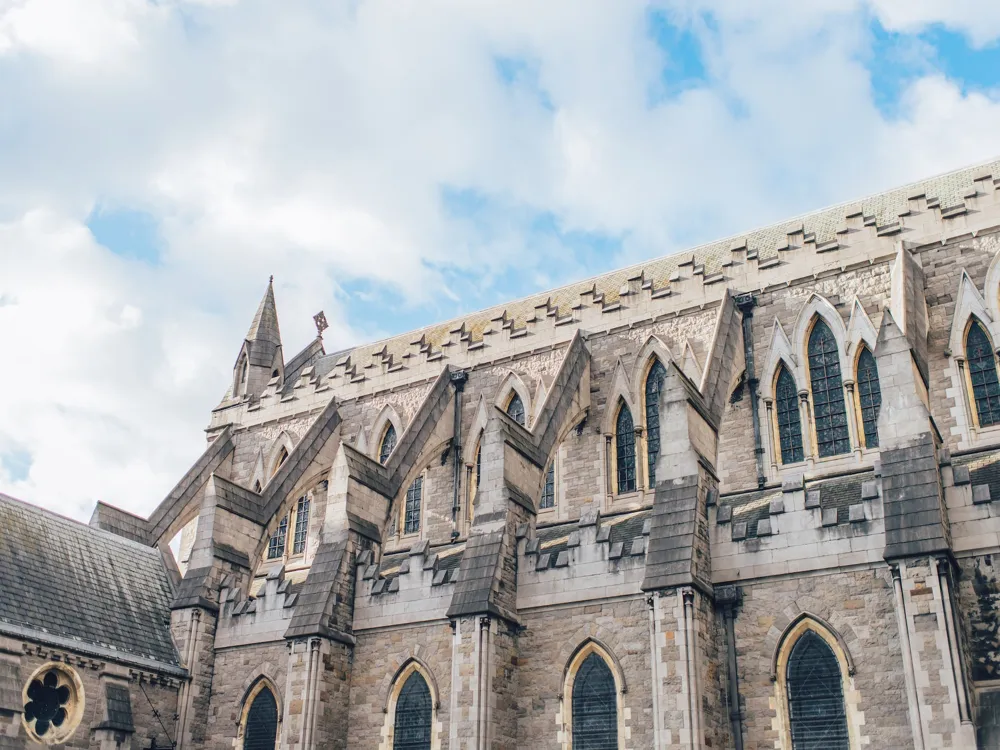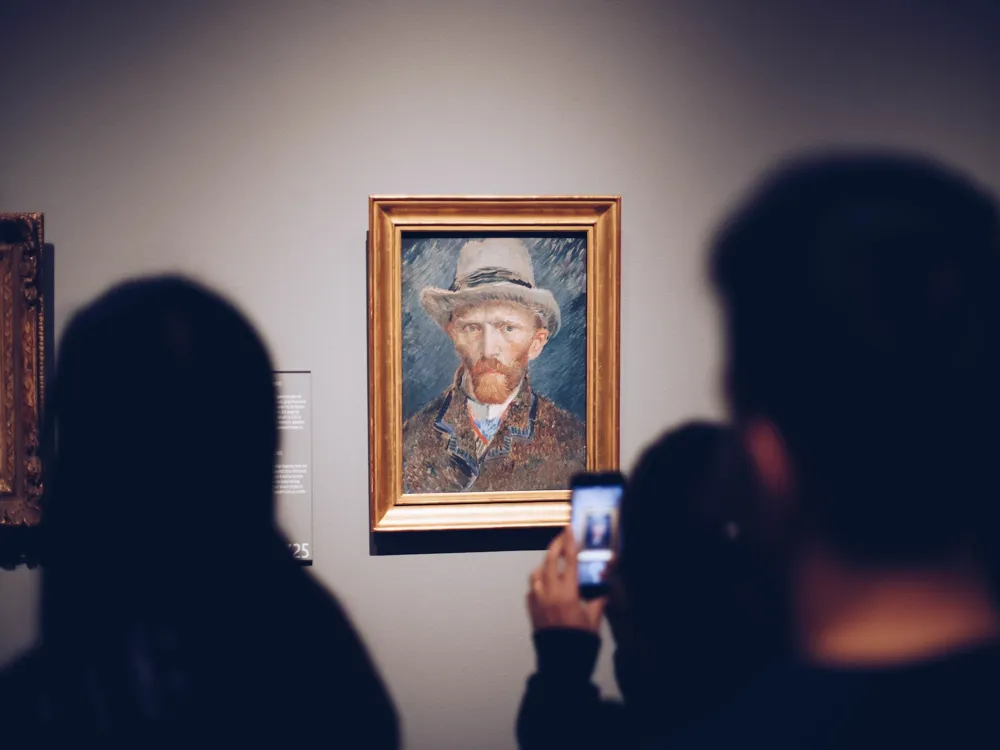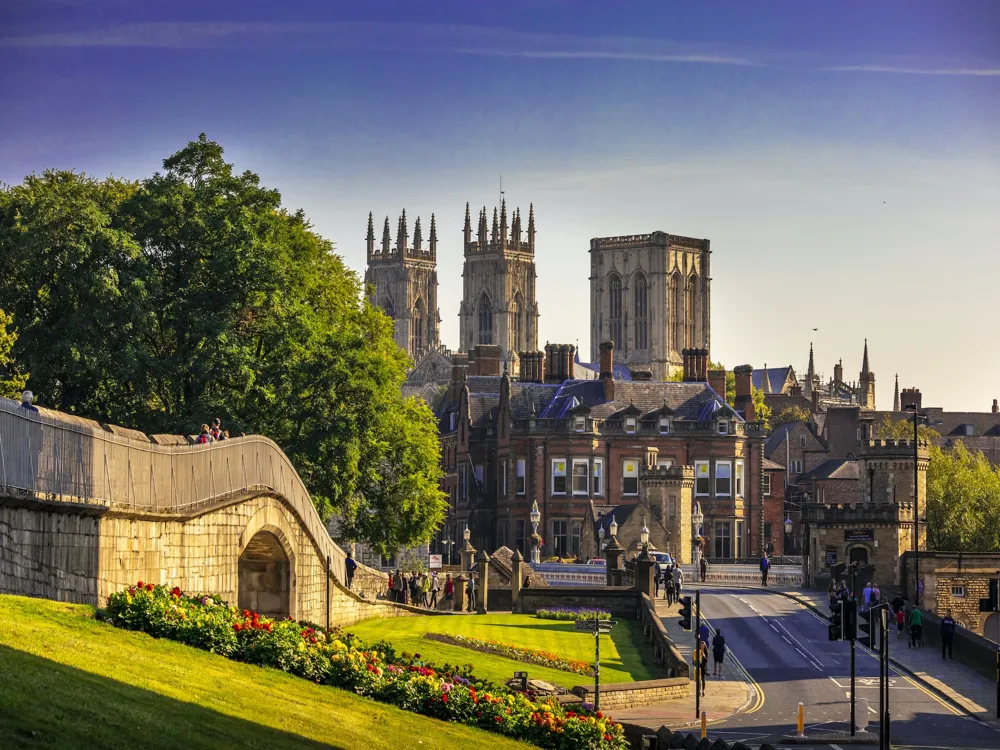St. Patrick's Cathedral, a beacon of historical and architectural significance, stands proudly in the heart of Dublin, Ireland. Built beside the well where Saint Patrick, Ireland's patron saint, is said to have baptized converts around 450 AD, this cathedral embodies centuries of Irish history and spirituality. The current building, a magnificent example of Gothic architecture, was erected in the 12th century and has since been an integral part of Dublin's landscape. It is not just a place of worship but also a repository of Irish history, reflecting the nation's tumultuous past through its walls and memorials. The cathedral's significance extends beyond its religious role; it has been a key player in the socio-political landscape of Ireland. Throughout centuries, St. Patrick's has witnessed numerous historical events, including the tumultuous times of the Reformation, and has served as a refuge during times of strife. Today, it stands not only as a place of worship but also as a symbol of Irish resilience and pride, attracting visitors worldwide with its breathtaking architecture and rich history. St. Patrick's Cathedral is a stellar example of Gothic architecture, a style characterized by pointed arches, ribbed vaults, and flying buttresses. Its spire, soaring 43 meters high, is a landmark in Dublin's skyline. The cathedral's exterior, made of local limestone, has withstood centuries of Irish weather, bearing witness to the passage of time with its weathered but enduring facade. Inside, the cathedral's vast nave impresses with its height and grandeur. The intricately designed stained glass windows, some dating back to the 19th century, cast colorful patterns on the ancient stone floors. The cathedral's interior is adorned with numerous monuments and memorials, each telling a story of Ireland's history and the notable figures who have been part of it. The choir, with its beautifully carved stalls, is home to one of Ireland's most renowned choirs, adding an auditory dimension to the cathedral's already rich sensory experience. Early morning or late afternoon is ideal to avoid crowds. The soft light during these times also provides a magical glow to the cathedral's interior, perfect for photography enthusiasts. Opt for a guided tour to gain deeper insights into the cathedral's history and architecture. The knowledgeable guides bring to life the stories behind the stones. As a functioning place of worship, visitors are encouraged to maintain a respectful demeanor, dress modestly, and avoid loud conversations or noises. St. Patrick's Cathedral is easily accessible from various parts of Dublin. Public transport is the most convenient way to reach the cathedral. Several bus routes stop near the cathedral, and it's a short walk from the Luas tram system. For those driving, there are parking facilities nearby, though they can get crowded during peak hours. For international visitors, the cathedral is just a short drive or bus ride from Dublin Airport, making it an easily accessible first stop for those eager to dive into Irish history. Read moreOverview of St. Patrick's Cathedral Dublin
Architecture of St. Patrick's Cathedral Dublin
Tips When Visiting St. Patrick's Cathedral Dublin
Best Time to Visit
Guided Tours
Respecting the Space
How To Reach St. Patrick's Cathedral Dublin
St. Patricks Cathedral Dublin
Dublin
₹ 84,000 onwards
View dublin Packages
Weather :
Tags : Church & Cathedral
Timings : Monday - Friday: 09:30 AM - 5:00 PM
Saturday: 09:00 AM - 6:00 PM
Sunday: 09:00 AM - 10:30 AM, 1:00 PM -2:30 PM, 4:30 PM - 6:00 PM
Entry Fee : Adult: EUR 9.00
Student/Senior (60+): EUR 8.00
Child (6–12): EUR 3.50
Infant (<5): Free
Family (2 adults & up to 3 children): EUR 24.00
Planning a Trip? Ask Your Question
Dublin Travel Packages
View All Packages For Dublin
Top Hotel Collections for Dublin

Private Pool

Luxury Hotels

5-Star Hotels

Pet Friendly
Top Hotels Near Dublin
Other Top Ranking Places In Dublin
View All Places To Visit In dublin
View dublin Packages
Weather :
Tags : Church & Cathedral
Timings : Monday - Friday: 09:30 AM - 5:00 PM
Saturday: 09:00 AM - 6:00 PM
Sunday: 09:00 AM - 10:30 AM, 1:00 PM -2:30 PM, 4:30 PM - 6:00 PM
Entry Fee : Adult: EUR 9.00
Student/Senior (60+): EUR 8.00
Child (6–12): EUR 3.50
Infant (<5): Free
Family (2 adults & up to 3 children): EUR 24.00
Planning a Trip? Ask Your Question
Dublin Travel Packages
View All Packages For Dublin
Top Hotel Collections for Dublin

Private Pool

Luxury Hotels

5-Star Hotels

Pet Friendly






















